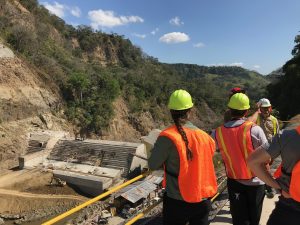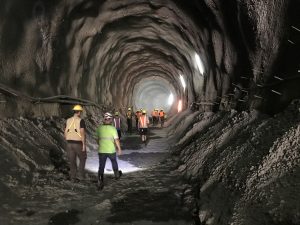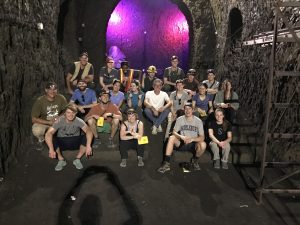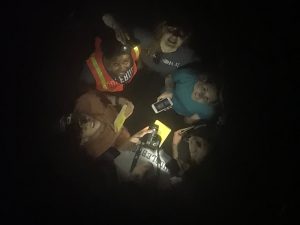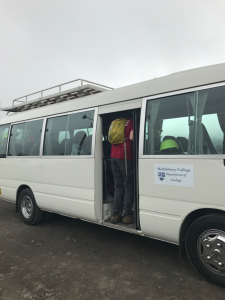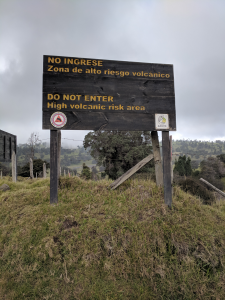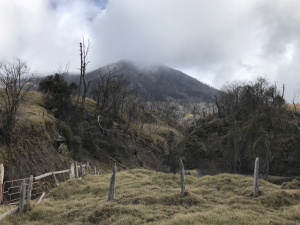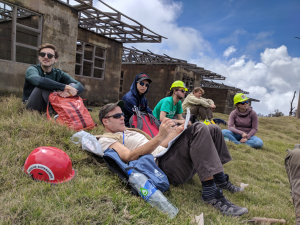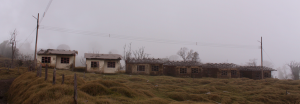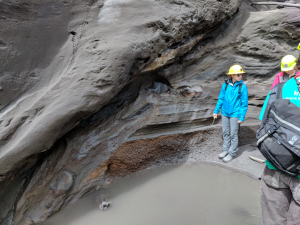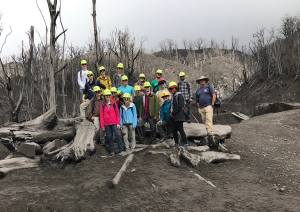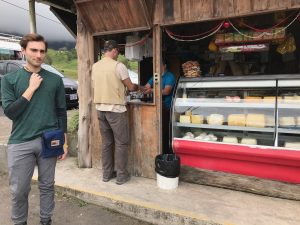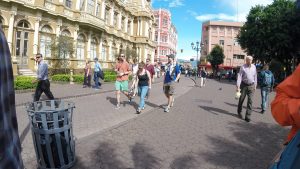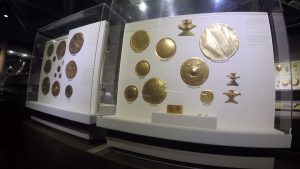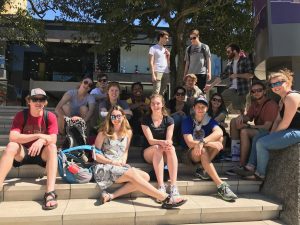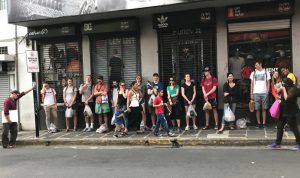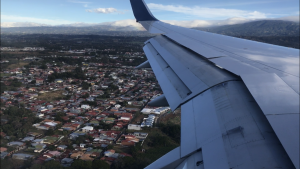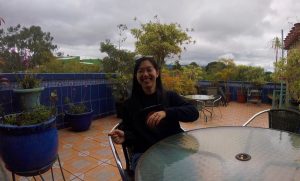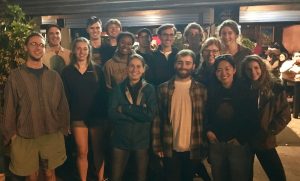Day 5: Thursday, 1/11/2018
by Gabby Davis (19′) and Morgan McGlashon (19′)
Today we moved from San Jose to Manuel Antonio, a coastal town by Parque Nacional Manuel Antonio! After an eventful few days in the city and nearby Volcán Turrialba, we are excited to see the ocean. The main events today included looking at uplifted terraces along the coast and parent material (modern beach sediments).

Pete and Kristina describing how the geology has changed from San Jose to the coast along our drive and Matt Barr with the assist for map holding.
We made three stops including one at Playa Esterillos Este where we found recently deposited mafic beach sediments. Next, we gained roughly a meter in elevation and drove about 1 km inland to examine the most recently uplifted terrace (1-2ka).

Eli digging our first soil pit of the trip along a 1-2ka terrace near Playa Esterios Este with Andrew and Pete for adult supervision.
Terraces are formed when sediments are deposited and uplifted during seismic events. Here the sediments were slightly weathered and beginning to form young silicate rich clay soils. Lastly, we stopped slightly further inland and about 40m asl to examine a much older terrace (40-50ka).

Exposed oxisols along the 40-50ka terrace near Playa Esterios Este with Matt for scale.
Here the soil was quite red due to high concentrations of iron oxide and a lack of nutrients as result of leaching. The large time gap between terraces indicates what may have been deposited between 2ka and 40ka was washed away with sea level rise resulting from a warming climate.
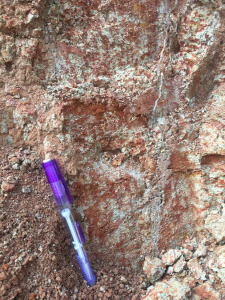
Mottled soil in C-horizon of the exposed soil in the 40-50ka terrace.

Liesel and crocodiles
In other news, everyone is thrilled to be at the coast, headed to Parqué Nacional Manuel Antonio tomorrow to look at sediment stratigraphy, and excited about seeing crocodiles this morning along our drive.

